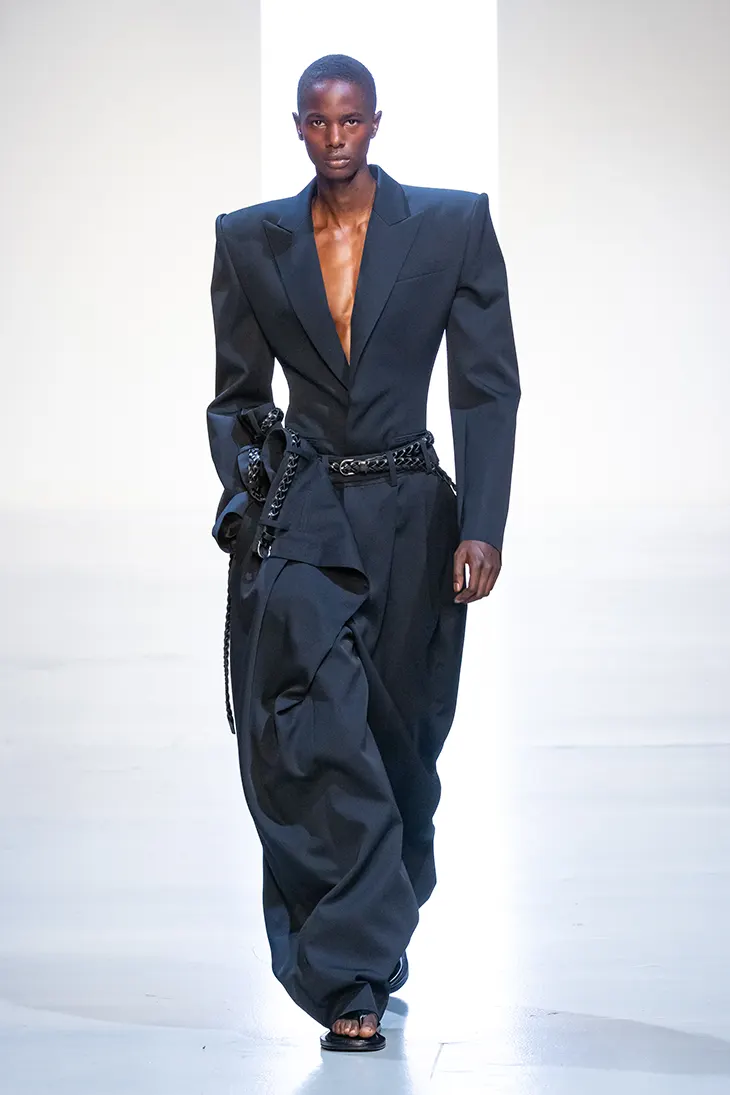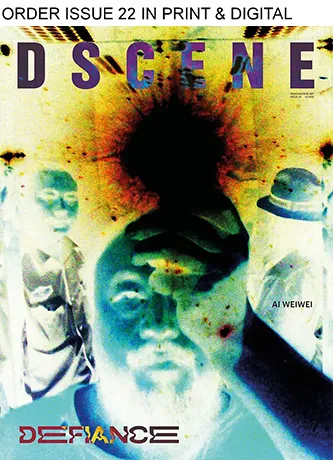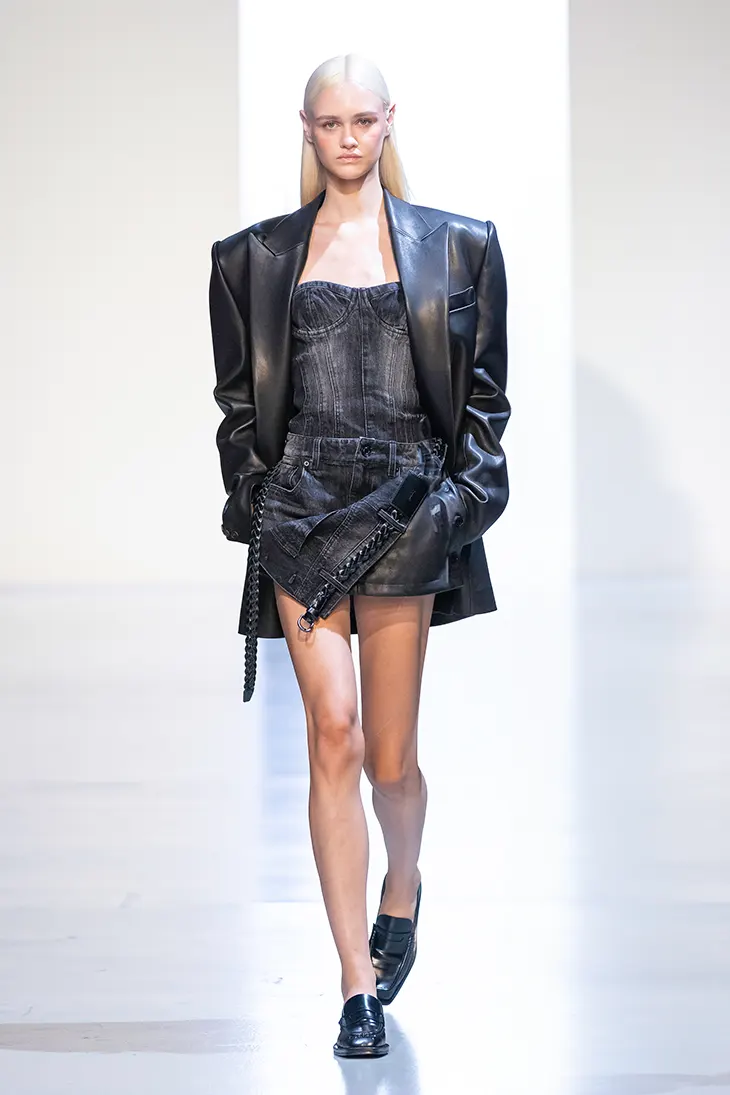
JUUN.J revealed its SS26 collection, titled BOY-ISH, during Paris Fashion Week. The brand presented menswear and womenswear looks that drew from moments of youthful experimentation. Designer Jung Wook-jun used the idea of clumsy styling choices as a starting point, not to correct them, but to reinterpret them into deliberate design decisions.
The collection focused on proportions, materials, and contrast. JUUN.J paired sharp tailoring with exaggerated shapes and structured suiting with raw denim. Voluminous tops met fitted trousers. The clothes shifted between weight and lightness without forcing symmetry. Each look showed control without hiding its irregularities.
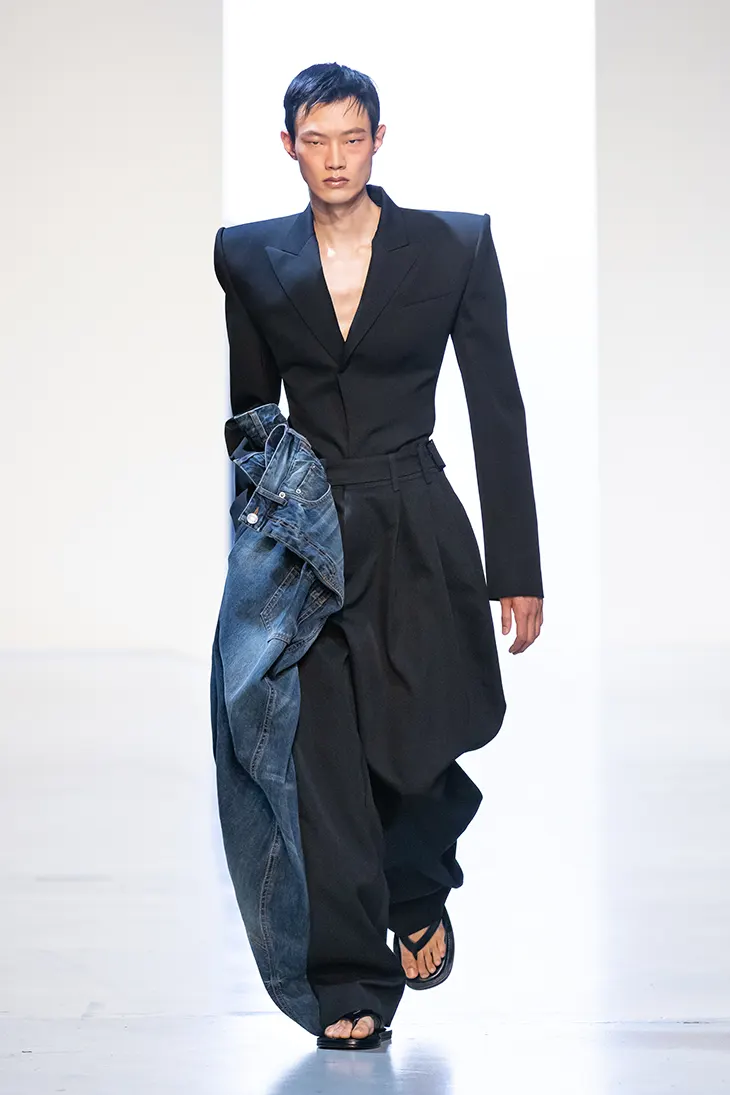
The runway, set in the clean, white space of Palais de Tokyo, provided a neutral setting. The color palette began with navy and expanded into black, red-brown, khaki, and royal blue. These shades pulled from traditional menswear but didn’t stay locked in that language. The mood shifted across streetwear codes and formal elements.
Materials played a key role. Wool suiting gave structure, while denim and leather added texture. Cotton blends softened some of the sharper cuts. JUUN.J used these fabrics to frame the clashing elements without smoothing them out.
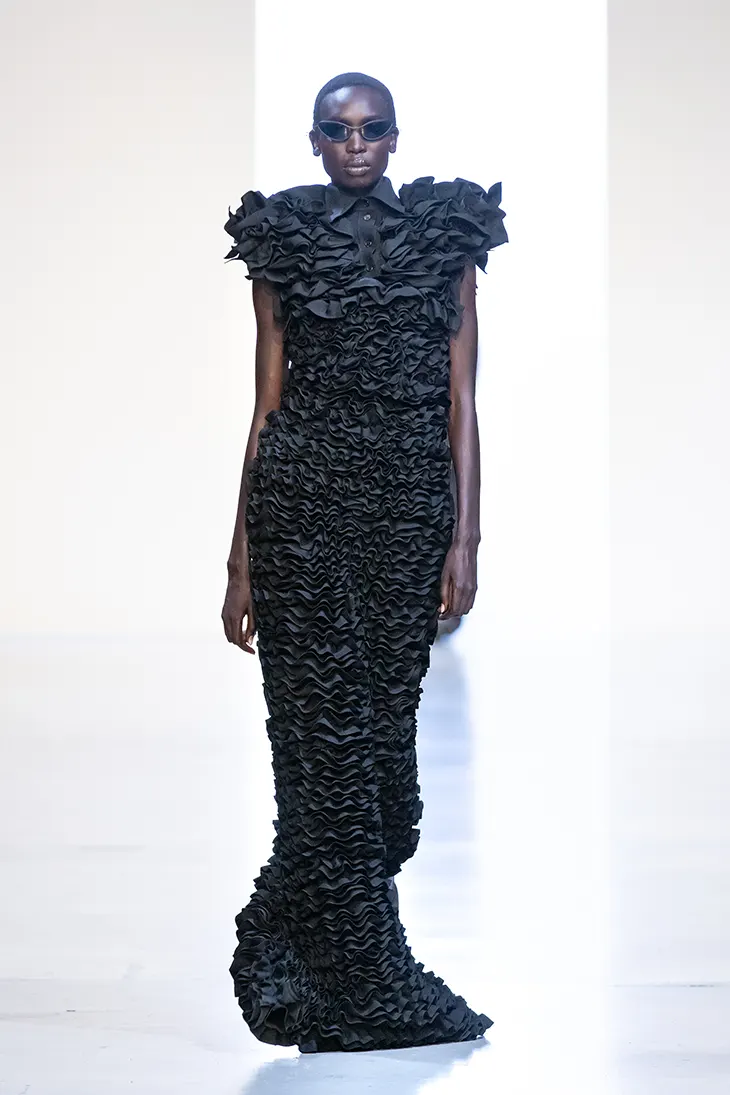
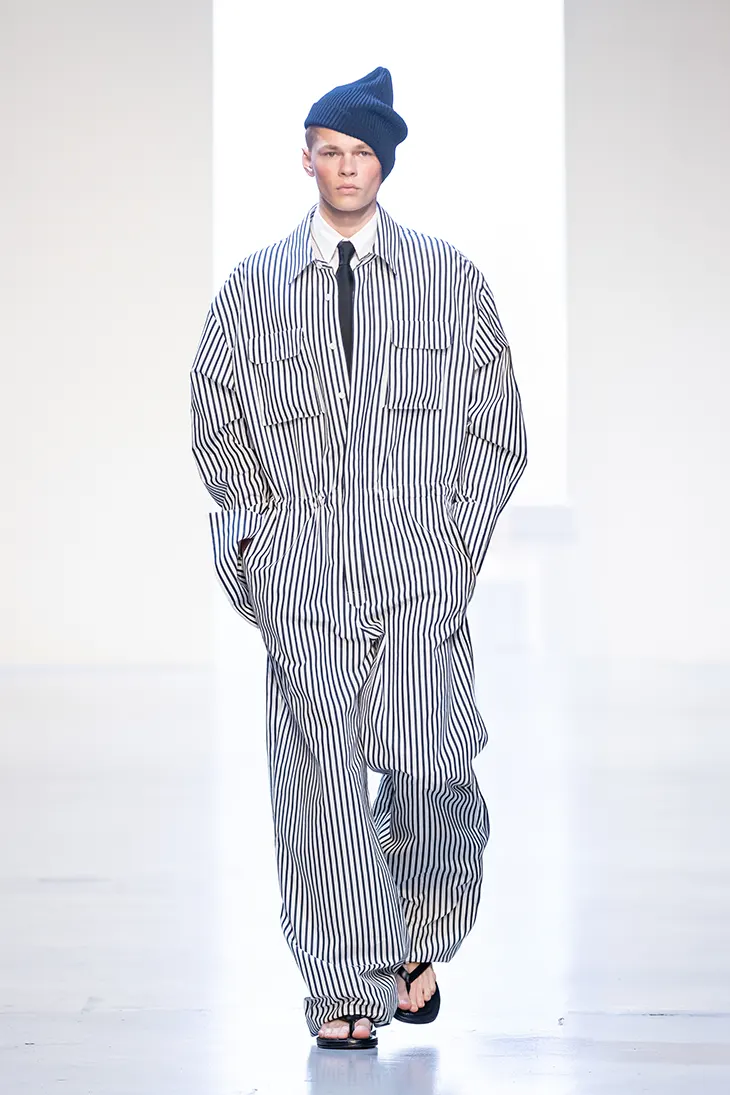
Jung Wook-jun described the collection as a response to the energy of mistakes. He focused on the moments when people, especially young people, try something that feels off at first, but lands with unexpected clarity.
BOY-ISH followed JUUN.J’s established design direction while pulling it into a new frame. Gender-fluid tailoring and structured silhouettes returned, but the styling felt looser. The construction stayed sharp, yet the energy remained open. Looks played with scale and proportion as tools. Sleeves widened, jackets extended, trousers dropped. Everything stayed rooted in cut and fabric.
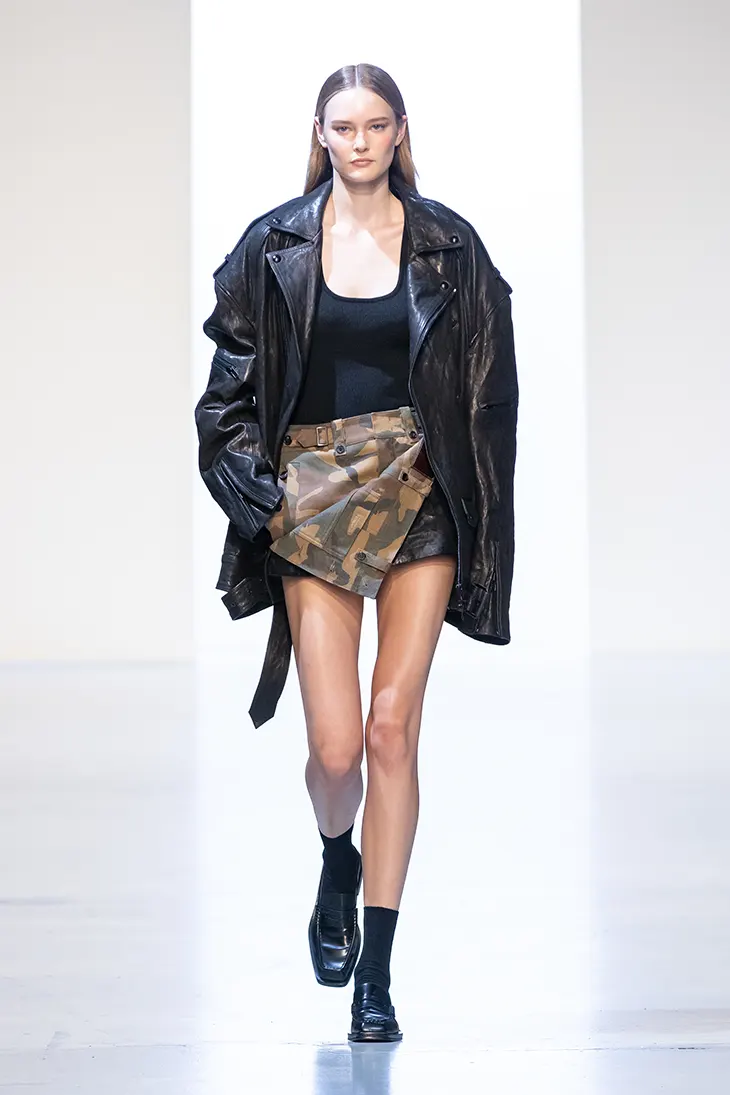
JUUN.J kept the casting balanced between menswear and womenswear. The styling treated both lines with the same design logic. The approach did not divide by gender but aligned through structure and proportion. That choice gave the collection consistency without repetition.
